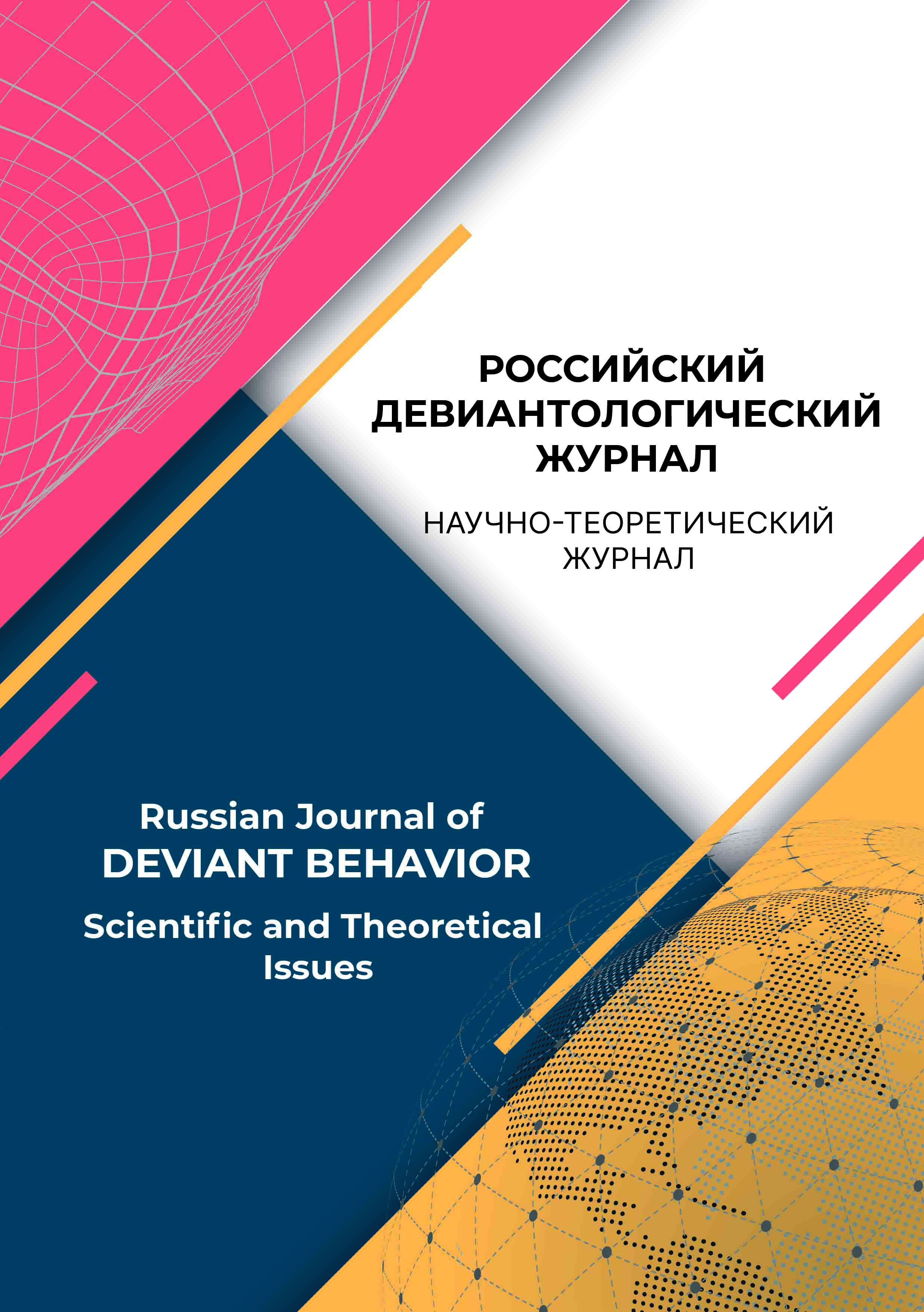from 01.01.2013 until now
Minsk, Belarus
Abstract. Personal safety from criminal offences is highly valued by society and state and is of top priority for the criminal science and criminal law. Human life, health, sexual freedom and safety, a relevant level of public order and morals are considered the most important goals of the law enforcement, and that demands a choice of harsh punishments for murder, bodily injuries, rape etc. Among all the crimes committed in our state violent crimes are both prevalent and significant due to a heightened harm to society, since they often bring irrevocable harm. Dangerous social processes (alcoholism, marginalization, addictions to different drugs and types of behavior, a rise of mental illnesses) bolster the danger. Therefore, creation and implementation of the modern ways and measures of violent offenses prevention becomes both relevant and timely. The system of prevention should be built basing on the quantitate and qualitive characteristics as a multi-level structure (general, special and individual level). Goal. Employing the academic research, case data, survey results the author aims at optimization of the multi-leveled system of the violent crimes and hooliganism prevention. Methods. The author uses comparative legal method, practical method of description, theoretical methods such as formal and dialectical logic, and surveys. Among the special scientific methods author has chosen formal legal and legal interpretation method. Results. Combating and prevention of crime, including violent offenses, stays a priority for every nation. It is directly related to the national safety from the domestic threats. One of the directions of state activities in that sphere is an exploration of the prevention methods. Collection of the analytical data on the quantitate and qualitive characteristics of the violent crimes in their dynamic, research in the sphere of personal characteristics of offenders violating life, health and sexual safety and public order allow us to create a holistic legal and scientific criminal policy in a Republic of Belarus, showing also a potential in prevention. Simultaneously a risk of recidivism among the convicted (more than 40 percent) for violence or violent threats demands our attention to the development and implementation of the multi-level prevention strategy. Scientific novelty. As a result of the research and accounting for the found criminal patterns the author offers an opinion of the prevention system reform in the field of violent crimes and hooliganism. Practical significance. The suggestions of the article in case of their implementation promise a probable decline of the violent crime rate, accounting for the optimization of the prevention activities of the different stakeholders in that field.
crime, violence, violent crime prevention, hooliganism, deviation
1. Abel'cev, S. N., Eriashvili, N. D. (gl. red.) (2000). Lichnost' prestupnika i problemy kriminal'nogo nasiliya. Zakon i pravo, Yuniti-Dana.
2. Ananich, V. A. (2001). Prestupnost' v Respublike Belarus': sostoyanie i tendencii. Vestnik Akademii MVD Respubliki Belarus', 1 (1), 30-36.
3. Ananich, V. A. (2014). Vvedenie v kriminologiyu: lekcii, uchrezhdenie obrazovaniya «Akademiya Ministerstva vnutrennih del Respubliki Belarus'». Minsk: Akademiya MVD.
4. Antonyan, Yu. M. (2001). Nasil'stvennaya prestupnost' v Rossii. V L.L. Anonian (otvetstv. red.), Ser. Aktual'nye voprosy bor'by s prestupnost'yu v Rossii i za rubezhom. Institut nauchnoy informacii po obschestvennym naukam RAN.
5. Dubinin, N. P., Karpec, I. I., Kudryavcev, V. N. (1989). Genetika. Povedenie. Otvetstvennost'. O prirode antiobschestvennyh postupkov i putyah ih preduprezhdeniya (2-e izd.). Moskva: Politizdat.
6. Kachurova, E. S. (2020). Viktimologicheskoe preduprezhdenie kriminal'noy agressii v sem'e pri soblyudenii rezhima samoizolyacii. Prolog: zhurnal o prave, 2, 60-63.
7. Lombrozo, Ch. (2004). Prestuplenie. Noveyshie uspehi nauki o prestupnike. Anarhisty. Moskva: Infra-M.
8. Mumaev, S-M. S. (2010). Viktimologicheskie aspekty profilaktiki nasil'stvennyh prestupleniy: na materialah ubiystv i umyshlennogo prichineniya tyazhkogo vreda zdorov'yu: avtoref. dis. ... kand. yurid. nauk. Rossiyskiy universitet druzhby narodov. Moskva.
9. Struchkov, N. A. (1977). Vvedenie v kriminologiyu: lekciya. Leningrad: Izdatel'stvo VPU MVD SSSR.
10. Tereschenko, T. G. (2021). O strukturno-sobiratel'nom portrete lichnosti nasil'stvennogo prestupnika. V Aktual'nye voprosy sovremennoy kriminologicheskoy i ugolovno-ispolnitel'noy nauki: tezisy doklada mezhdunarodnoy nauchno-prakticheskoy zaochnoy konferencii pamyati doktora istoricheskih nauk, professora A.V. Sharkova (Minsk, 15 apr. 2021 g., str. 245-247). Uchrezhdenie obrazovaniya «Akademiya MVD Respubliki Belarus'».
11. Yakovlev, A. M. (1985). Teoriya kriminologii i social'naya praktika. Moskva: Nauka.
12. Kumagae, F. (1983). Final Violence in Japan. Victimology, 8, 178-183.
13. Raphael, J, Rennison, C. M., & Jones, N. (2019). Twenty-Five Years of Research and Advocacy on Violence Against Women: What Have We Accomplished, and Where Do We Go From Here? A Conversation. Violence Against Women, 25(16), 2024-2046. https://doi.org/10.1177/1077801219875822
14. Rennison, C. M., DeKeseredy, W. S., & Dragiewicz, M. (2013). Intimate Relationship Status Variations in Violence Against Women: Urban, Suburban, and Rural Differences. Violence Against Women. 19(11), 1312-1330. https://doi.org/10.1177/1077801213514487
15. Rennison, C. M., Jacques, S., & Allen, A. (2016). Victim Injury and Social Distance: A National Test of a General Principle of Conflict. Violence & Victims, 31(4), 726-751. doi:https://doi.org/10.1891/0886-6708.VV-D-15-00023
16. Rennison, C. M., & Planty, M. (2006). Reassessing Who Contributed Most to the Decline in Violence During the 1990s: A Reminder That Size Does Matter. Violence & Victims, 21(1), 23-47.














